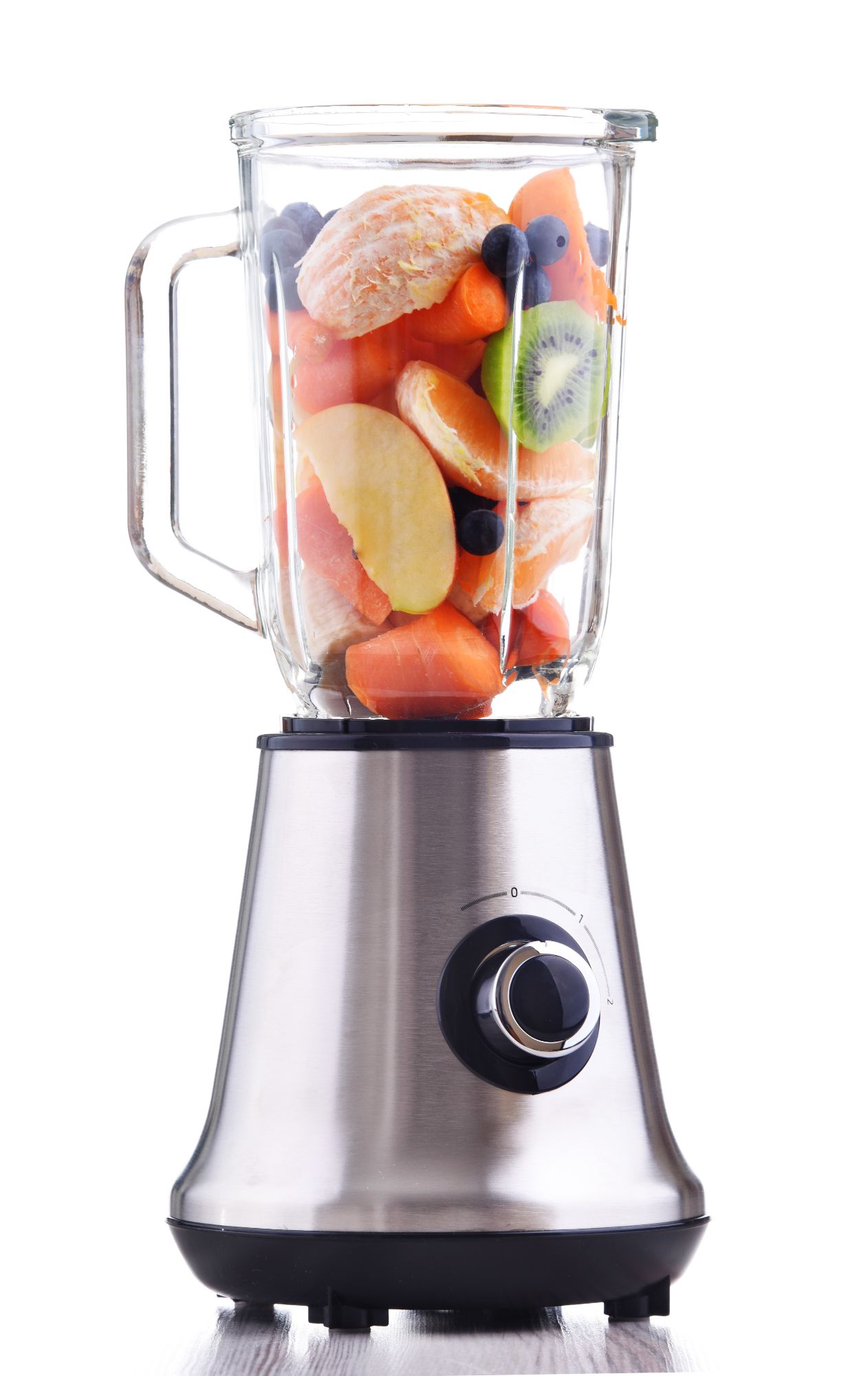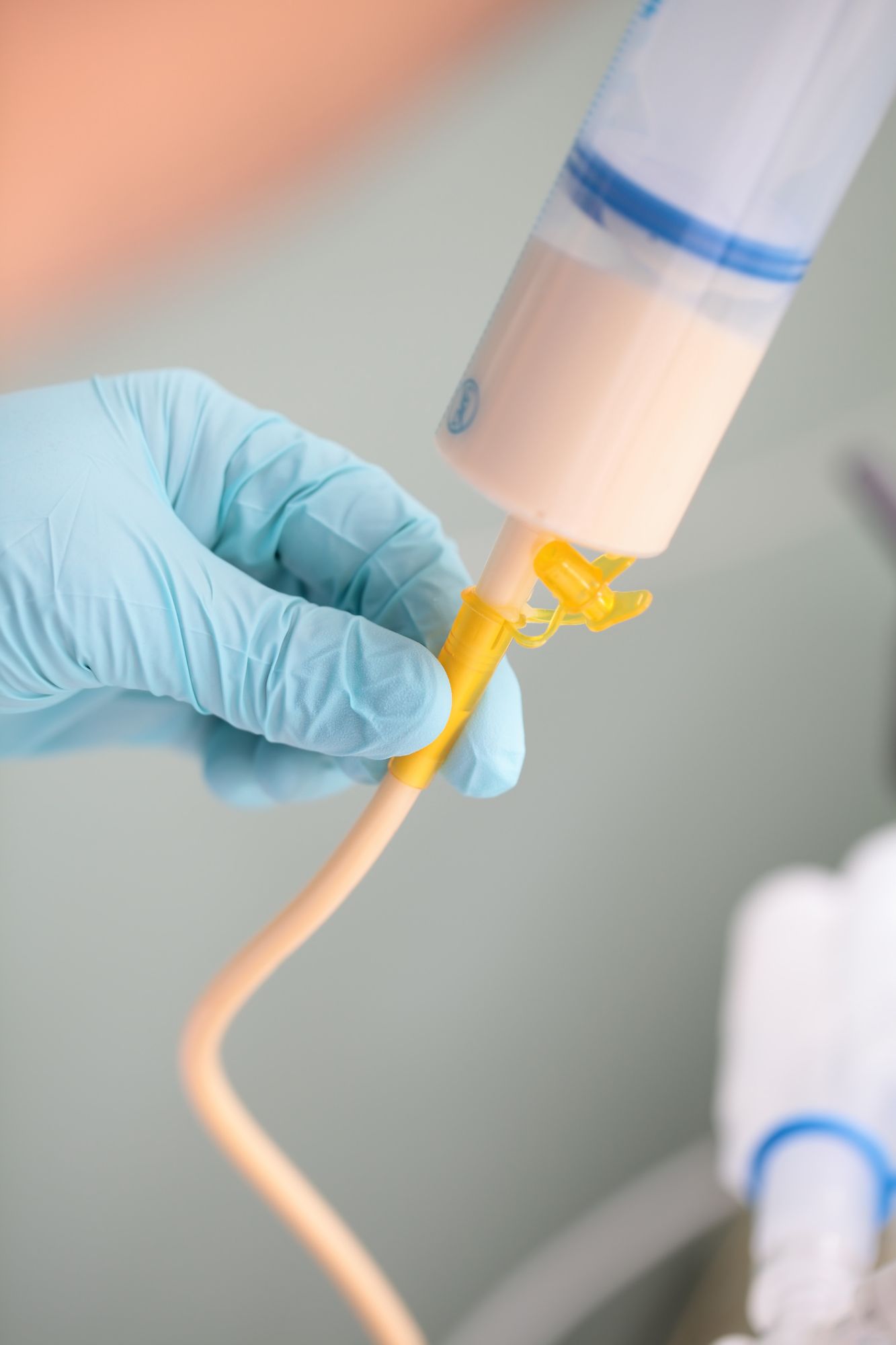NHD Paediatric Hub
Should acute dietitians help implement blended diets within a hospital setting?
Ellie heads up our Paediatric Hub this month. Here she highlights ADHD in children and asks whether dietitians should play a lead role in dietary consultations and interventions for this cohort.
Instagram: @paediatricdietitian
Twitter: @ellie_may-evans
Ellie-May Evans, RD
NHS Rotational Dietitian, Paediatrics
Home Enteral Tube Feeding (HETF) has been increasing over the past few years. The majority of HETF people have a prescribed commercially prepared formula but in recent years there has been an increase in blending everyday foods with liquids to be given through the tube.
NHD was recently involved with Nestle in a dietitians' round table discussion on the pros and cons of blended diet. The discussion covered many aspects of blended diet and highlighted the benefits of using it for HEFT. Here I want to focus on blended diet within the hospital setting and discuss the efficacy and practicalities involved in its practice in acute paediatrics.
So, what is blended diet?
Blended diet is an umbrella term for a wide range of enteral feeding practices and could refer to any food or drink other than water, expressed breastmilk, infant formula, or commercial feeds. The practice is evolving and unique, with some families using blends to meet their child's full nutritional requirements, while others use it in smaller quantities and combined with commercial feeds. (1)

Physiological and emotional benefits
There are many physiological and emotional benefits reported with blended diet. Physiological benefits include a decrease in vomiting, retching and reflux, which are common in long-term HETF patients. One Canadian study from Gallagher et al in 2018 (2) found a decrease in vomiting from 82% to 53%. However, this was in a small cohort in size. A larger prospective cohort of 70 children aged between 1 and 18 in the USA reported similar findings for a reduction in reflux. (3)
Moreover, blends have been shown to improve bowel habits, with Pentiuk et al reporting a decreased incidence of constipation once established on a blended diet. (4) In the study by Gallagher et al (2), bacterial diversity of stool samples increased with the introduction of blended diet. We cannot overlook the psychological benefits following a blended diet too, One in-depth study with parents of tube-fed children and young people highlighted the significance of sharing the same food as their family and friends on special occasions such as birthdays or Christmas. Interestingly, parents further reported blends offered a sense of normality in the family setting and provided them with a sense of empowerment to choose what their child would eat. (5)
Can blended diet be supported in a clinical setting?

With such an impact on health and well-being, even with the controversial opinions associated with blends, it’s understandable why most parents/ HETF people wish to start utilising real foods within their diets. Whilst this is feasible within the home, one cannot help but question how this can be continued in hospital and whether this should be supported in a clinical setting.
Regulation 14 is part of the CQC regulation that highlights the need to support our patients with adequate nutrition and hydration, to reduce the risk of malnutrition and to provide a choice of food and drink that is nutritionally balanced to help meet the diverse needs of our patients. This may be interpreted and provides grounds for hospitals to provide blends to this patient group when they are admitted in certain circumstances.
Risk assessment
In many hospitals, when a family wants to continue their child’s blended diet on the ward, the dietitian provides a trust-approved risk assessment and waiver document. This waiver must be discussed and signed by the parent/carer. However, this is not a legal binding document and would not hold up in a court of law. some might argue that by allowing this to continue patient care is compromised by increasing the risk of food-borne illnesses, recurrence of GI disturbances, poor feed tolerance and in some severe cases, faltering growth. Furthermore, this would likely impact and delay hospital discharge.
Concerns such as these build the case for needing blended diet guidelines to support inpatients who continue on a blended diet in hospital
There are of course circumstances when this could not be suitable, such as bowel obstruction, nasogastric tube feeding, exclusive jejunal feeding or the need for exclusive continuous/pump feeding, to name but a few.
Therefore, when considering establishing a blended diet policy or guideline within an inpatient setting, there are various factors that need to be considered, including:
- Administration
- Blends composition and nutritional adequacy
- Food Safety and Hygiene
- Catering provision
- Costs and Availability of Equipment
Barriers to trying to establish a blended diet protocol
One of the main barriers NHS trusts may face is ensuring that catering is on board from a food safety aspect. For example, often trusts may utilise level 4 pureed meals but these need to be heated to a certain temperature before being served. However, with a blend, you need to dilute it, which decreases the temperature and then there is the time required to sieve the product. Prolonged preparation time can increase food safety risks. Therefore, when trying to establish a blended diet regimen within a care setting you may face some debate regarding the length of time between generating a meal and administering it to the child.
Currently, the gastrostomy tubes are not licenced to be used for blended diet and, therefore, nurses cannot help to administer blends as it places their registration at risk. To overcome this, dietitians will have to ensure parents take responsibility. This can be established by ensuring parents sign a shared decision-making document, which will also need to be signed by the medical team and the dietitian. This should be reviewed for each admission due to situations when blends may be contraindicated, such as an admission into intensive care.
How supportive can ward staff and dietitians in an acute setting be?
As explained, ward staff are unable to help with preparing blended diet meals on the ward. Therefore, the responsibility often has to remain with the parent or carer. However, some trusts are piloting using healthcare assistants to help, as they don’t have a registration. Unfortunately, this doesn't mean staff and dietitians cannot support these families all the time.
One way the medical team can support this, however, is to provide guidance on how much fluid to use for a particular blended meal. They can also ensure that there is a special area in the ward kitchen to prepare these meals and that clean equipment is available at all times.
It's vital to discuss what meals are suitable for blending that the hospital can provide.
When establishing guidelines or protocols, involve the catering management team at each step of the process, as this will help ensure success.

WHAT FURTHER WORK NEEDS TO BE DONE WITH BLENDED DIET?
- There needs to be more guidance and policies for the administration of blended diet to children in hospital settings.
- Let's educate upcoming student dietitians about blended diet and the potential risks, so they are educated when they come into the workforce.
- Discussion with gastrostomy companies is required to either produce a new tube or consider changing tube C licences so that tubes are compatible with giving blends.
- Let's continue to educate the medical team about the complexities and barriers thta may be faced when commencing or continuing blends within a hospital setting.
PRACTICAL IMPLICATIONS TO TAKE FORWARD
- Acute dietitians need to consider how they can support blends within a hospital setting as the prevalence for blended diet increases. This should involve clear trust guidelines involving infection prevention. Control teams and catering departments should be involved in this process.
- Community dietitians should have discussions with all their patients regarding inpatient hospital plans and their expectations in different settings in case blends cannot be provided and consider if there needs to be a secondary emergency plan in place.
- Further research is needed to analyse the true level of risk associated with blended diet compared with the benefits to help form best practice guidance.
References
- Dunn Klein M and Evans Morris S. The Continuum Concept in Homemade Blended Formula. Homemade Formula Handbook. Tuscon: Mealtime Notions LLC, 2007
- Gallagher K, Flint A, Mouzaki M, Carpenter A, Haliburton B, Bannister RD, Norgrove H, Hoffman OT, Mack D, Stintzi A, Marcon M (2018), Blenderised Enteral Nutrition Diet study: Feasibility, Clinical and Microbiome Outcomes of Providing Blenderised Feeds through a Gastric Tube in a Medically Complex Paediatric Population. Journal of Parenteral and Enteral Nutrition, Vol. 42, pp 1046-1060
- Hron B, Fishman E, Lurie M, Clarke T, Chin Z, Hester L, Burch E and Rosen R (August 2019), Health Outcomes and Quality of Life Indices of Children Receiving Blenderised Feeds via Enteral Tube. The Journal of Paediatrics, Vol. 211, pp 139-145
- Pentiuk S, O'Flaherty T, Santoro K, Willging P and Kaul A (May 2011), Pureed by gastrostomy tube diet improves gagging and retching in children with fundoplication. Journal of Parenteral and Enteral Nutrition, Vol. 35, pp 375-379
- Durnan S (2018). It's just food, blended: Exploring Parents' Experiences of Choosing Blended Diet for their Tube fed child. s.l. : Coventry University
